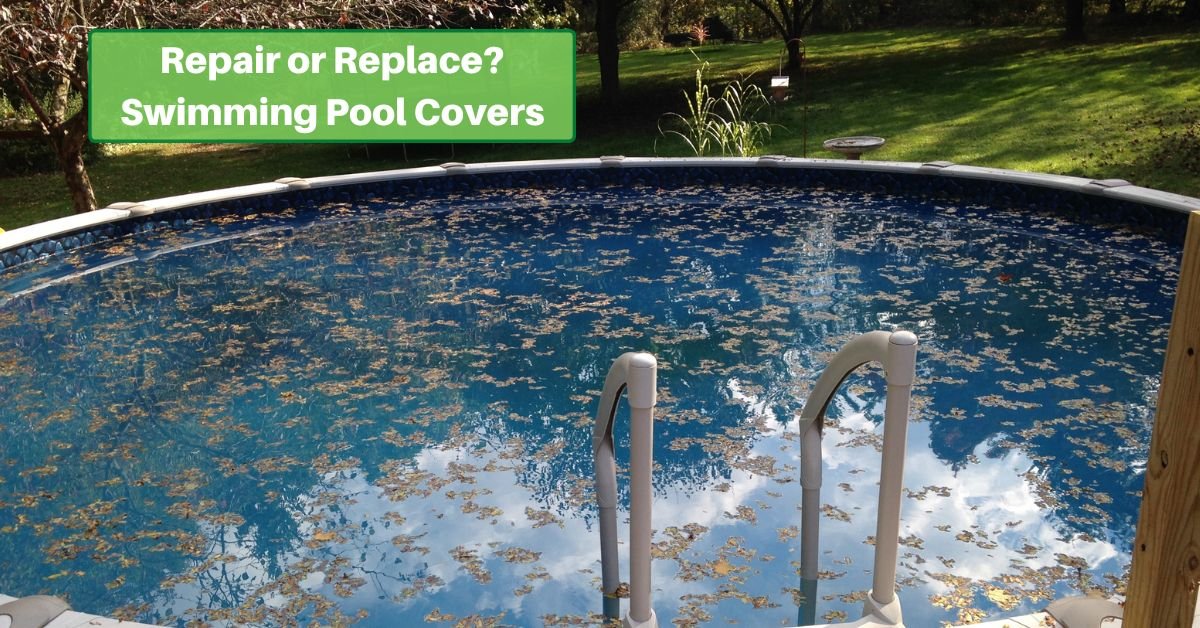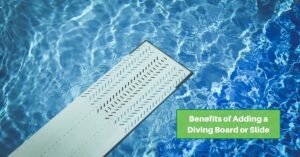Maintaining a pool cover is about keeping the water clean, but it’s also a critical aspect of pool safety, energy efficiency, and overall pool health. Over time, pool covers can suffer from wear and tear, including tears, holes, and the breakdown of seals. These issues, if left unaddressed, can compromise the cover’s effectiveness and the safety it is designed to ensure.
The question arises: when is it best to repair these damages, and when should the cover be replaced entirely? This article delves into assessing pool cover damage, fixing minor issues through patching and re-sealing, and recognizing when replacement is more viable.
Assessing Pool Cover Damage
The first step in maintaining your pool cover is a thorough inspection to understand the extent of the damage. Clean the cover to ensure a clear view of any tears, holes, or seal deterioration. Look for areas where the material has become thin or brittle, which will likely develop into more significant issues. For safety covers, inspect the straps and anchors for wear or rust, which could affect the cover’s ability to secure properly.
When deciding whether to repair or replace, consider the cover’s age, the damage’s severity, and the cost implications. Minor damage, such as small tears or holes, can often be repaired easily, but extensive damage or wear might require a complete replacement, especially if the cover is nearing the end of its expected lifespan.
Repairing Minor Damage: Patching Techniques
For minor tears and holes, patching is a practical solution that can extend the life of your pool cover. The approach varies with the type of pool cover you have:
- Vinyl Covers: Use a vinyl patch kit, ensuring the patch is larger than the tear or hole. Clean the area around the damage with alcohol and apply the adhesive to the patch, pressing firmly for a secure bond. Allow it to dry according to the manufacturer’s instructions.
- Mesh Covers: Mesh cover repairs might require a special patching material to maintain the cover’s permeability. Stitch the patch over the hole or tear with weather-resistant thread, ensuring a tight seal.
Regardless of the type, always follow the manufacturer’s repair guidelines to avoid further damage. It’s crucial to use the right tools and materials, such as marine-grade adhesive for vinyl covers, to ensure a durable repair.
Re-sealing Weathered Pool Covers
Over time, the seals and seams of pool covers can deteriorate, leading to leaks and reduced effectiveness. Re-sealing these areas can significantly extend your cover’s lifespan. Start by cleaning the seams thoroughly to remove any dirt or algae buildup. Use a high-quality sealant recommended for your type of cover, applying it evenly along the seams. For best results, apply the sealant in dry conditions and allow it to cure fully before using the cover again.
Choosing eco-friendly sealants ensures a strong bond and contributes to a healthier environment, aligning with sustainable gardening and maintenance practices.
By addressing minor issues through patching and re-sealing, you can maintain the integrity and functionality of your pool cover, ensuring it continues to protect your pool effectively. However, it’s essential to recognize when repairs are insufficient and replacement becomes necessary.
When to Opt for Replacement
While patching and re-sealing can address minor issues, there comes a point when replacing the pool cover is the most practical and safe decision. Here are some indicators that it’s time for a new cover:
- Extensive Damage: If the cover has multiple areas of damage, especially in critical points like straps or seams, it’s likely beyond repair. Large tears or holes can compromise the cover’s structural integrity and safety.
- Age: Pool covers have an expected lifespan, which varies depending on the material and type. If your cover is nearing or has surpassed this age, its performance may no longer be reliable.
- Inefficiency: A cover that no longer retains heat, keeps the pool clean, or provides adequate safety due to wear and tear is due for replacement.
- Cost of Repairs: When the cost of continuous repairs approaches or exceeds the price of a new cover, investing in a replacement is more economical in the long run.
Selecting a New Pool Cover
In choosing a new pool cover, prioritize durability, eco-friendliness, and safety features. Look for covers made from high-quality, recyclable materials that offer UV resistance, tear resistance, and energy efficiency.
Eco-friendly Disposal and Recycling Options for Old Pool Covers
Disposing of an old pool cover responsibly is crucial to minimize its environmental impact. Here are a few suggestions:
- Recycling Programs: Some manufacturers and local recycling centers accept old pool covers, especially those made from polyethylene or other recyclable materials.
- Upcycling: Creative upcycling projects can give your old pool cover a new life, such as using it for weed barriers in the garden, protective floor coverings for painting, or even DIY outdoor furniture covers.
- Community Sharing: Offer the cover to community gardens, schools, or local clubs that might repurpose it for covering materials or makeshift shelters.
Maintaining, repairing, or replacing your pool cover ensures your pool’s safety and cleanliness. It contributes to energy efficiency and environmental sustainability. By carefully assessing the condition of your pool cover and opting for repairs or replacements when necessary, you can extend its lifespan and maximize its benefits. When replacement becomes inevitable, choosing an eco-friendly option and disposing of the old cover responsibly further supports our commitment to environmental stewardship.









